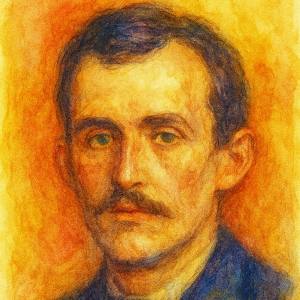 Expressionism artist Edvard Munch (1863–1944), born on this day near Oslo,
Norway, created one of the best-known paintings in the world,
The Scream (1893), a symbol of
honest horror and angst against an unforgettable swirling
red sky.
Expressionism artist Edvard Munch (1863–1944), born on this day near Oslo,
Norway, created one of the best-known paintings in the world,
The Scream (1893), a symbol of
honest horror and angst against an unforgettable swirling
red sky.
“I sensed a scream passing through nature,” he explained. “I painted the clouds as actual blood. The color shrieked.” His work pulled the inner landscape out into the open, letting feelings speak in bold lines and restless color.
His art reflected the pain he suffered as a child. Munch lost his mother, brother, and sister to tuberculosis. “I was born dying,” he recalled. “Sickness, insanity, and death were dark angels standing guard at my cradle and they followed me throughout my life.”
At 21, he traveled to Paris to deepen his passion for painting and created The Sick Child (1885–1886) while grieving his sister’s death. “The camera cannot compete with the brush and the palette so long as it cannot be used in heaven or hell,” he said, insisting that art could cross thresholds no lens could capture.
Influenced by Paul Gauguin and Vincent Van Gogh, Munch used color to carry his sorrow. He described himself as “a poem of life, love, and death,” creating “ soul paintings” and calling his canvases his children, saying, “I have nobody else.”
In 1894, the Norwegian artist created his first etchings and lithographs. His innovative jigsawed woodcuts helped revive graphic art as he explored the power of carved line and layered ink. “Art,” he observed, “is the antithesis of nature.”
After a nervous breakdown, Munch turned toward “perpetual forces of life,” painting canvases and murals with a lighter, brighter palette and a new optimism. He embraced landscapes and everyday scenes while still honoring the depth of the inner world. In 1940, he bequeathed all the works of art in his possession—thousands of paintings, drawings, and prints—to the city of Oslo.
His life reminds us that even our darkest colors can be transformed. What we pour onto the canvas of our days becomes our quiet legacy, a living echo of how we dared to feel and to create.
More Art & Artists Quotations
 You live on in what you create. 🎨
You live on in what you create. 🎨
